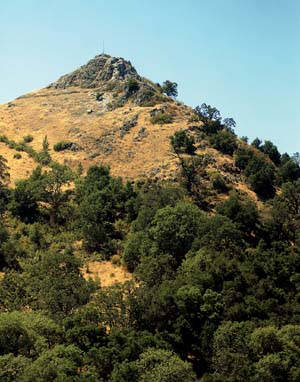After spending a century building the nation’s largest and most
majestic state park system, Californians are poised to do something
unprecedented: Retreat from that legacy and start closing parks
– perhaps some in San Benito County.
After spending a century building the nation’s largest and most majestic state park system, Californians are poised to do something unprecedented: Retreat from that legacy and start closing parks – perhaps some in San Benito County.
Years of budget cuts in the California State Parks system have resulted in widespread reductions in park hours, crumbling facilities and reduced staffing. But in the past few years, lawmakers have rejected widespread closures proposed by former Gov. Arnold Schwarzenegger.
Now, however, the climate has changed. Gov. Jerry Brown’s budget requires another $22 million in cuts to the parks budget – a pittance compared with the $25 billion state budget deficit, but a number that even strong parks supporters say is unlikely to be achieved without shuttering parks.
Brown also wants cuts of $30 million to local libraries and $32 million to local fairs.
“I think they are going to have to close parks,” said Traci Verardo-Torres, vice president of governmental affairs for the California State Parks Foundation, the nonprofit advocate for parks. “This is uncharted territory.”
Read the Free Lance on Twitter here.
Voters rejected a foundation-sponsored ballot measure in November that would have added $18 to annual vehicle registrations to pay for park operations. Its passage would have prevented closures.
Now, officials at the Parks Department are preparing a list of closures to accommodate the $22 million cut.
Likely targets among the state’s 278 parks will be those with the least visitation and annual revenue, said Roy Stearns, a spokesman and deputy director of the department.
Another vulnerable property is Fremont Peak State Park outside of San Juan Bautista. Its remote location and 3,200-foot elevation offer a unique vantage point for stargazing. In 1986, volunteers built an observatory with a 30-inch telescope atop the peak, and stargazing events became a major park attraction.
Last year, when the park was closed most weekdays to save money, break-ins and vandalism became such a problem that officials were forced to restore regular hours to avoid increasing costs of damage to the park.
Rick Morales, president of the Fremont Peak Observatory Association, has mixed emotions about the state’s budget troubles. A former state park ranger, he helped get the observatory built when he worked in the park.
“It kind of saddens me. But as I age, I get a little more conservative politically,” he said. “Maybe this period of time, when we really have to look at what government needs to provide and doesn’t, maybe we’ll all be better for it with the government shrunk a little bit.”
Unlike a list developed in 2008 and later abandoned after a public and political outcry, the new list will take a long view. Parks that provide ample access for the disabled may be kept open regardless of other factors. Those with major concessionaire contracts might be kept off the list to avoid legal trouble.
And parks with unique historical treasures could be kept open, despite low attendance, to ensure public access to lessons from the state’s past.
“It’s a more complicated equation, but we think it’s a more thorough and balanced look at how to reshape the park system for the foreseeable future,” said Stearns.
“The governor has said, in all his talks, that it’s time for a tough budget in tough times,” he added. “People need to really understand the magnitude of what’s happening in California.”
The proposed closure list should be released by mid-February, Stearns said. He declined to say how many parks might be on it.
He said plans are being made to place closed parks in a “caretaker” status, ensuring regular visits by park rangers or maintenance personnel.
That will be essential to avoid vandalism and theft, both of which are already growing problems in the park system, as documented by The Bee in a series of stories last year that reviewed data on park crime and maintenance problems.
Park advocates fear occasional visits won’t be enough to avoid trouble.
At Malakoff Diggins State Historic Park in the wilds of Nevada County, illegal marijuana farmers are already pressing right up against the park borders. Without daily activity in the park, Wes Nelson of the Malakoff Diggins Park Association fears the worst.
“I’m pretty positive, unfortunately, that we’ll be on that list,” said Nelson, president of the nonprofit association that assists the park. “Our concern is the safety of the park and its artifacts if the closure does happen.”
Malakoff’s remote location results in low attendance. As a result, the park was targeted for closure in 2008.
Yet an environmental education program at the park for local schoolchildren is already booked for the summer.










